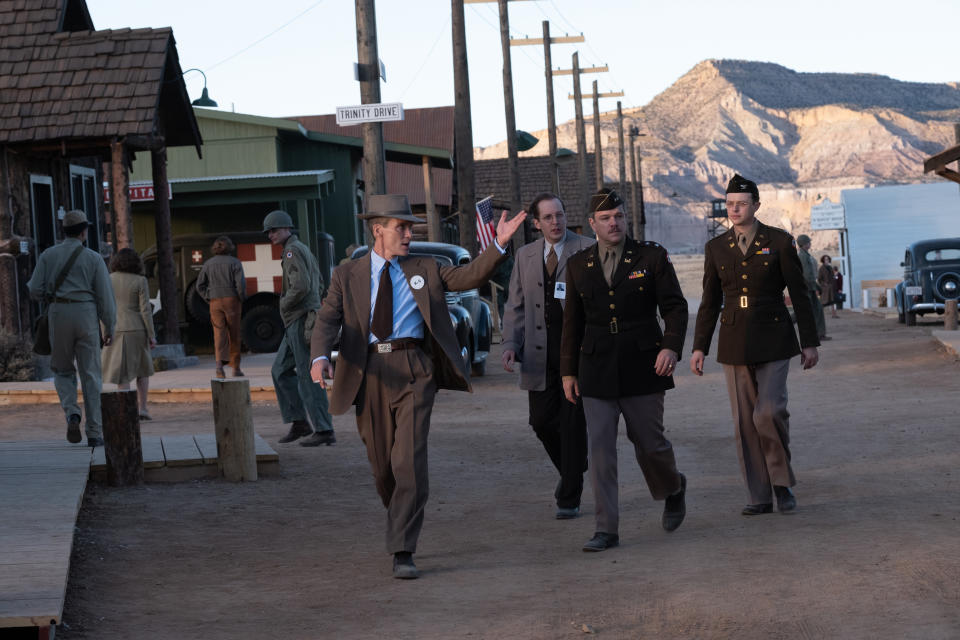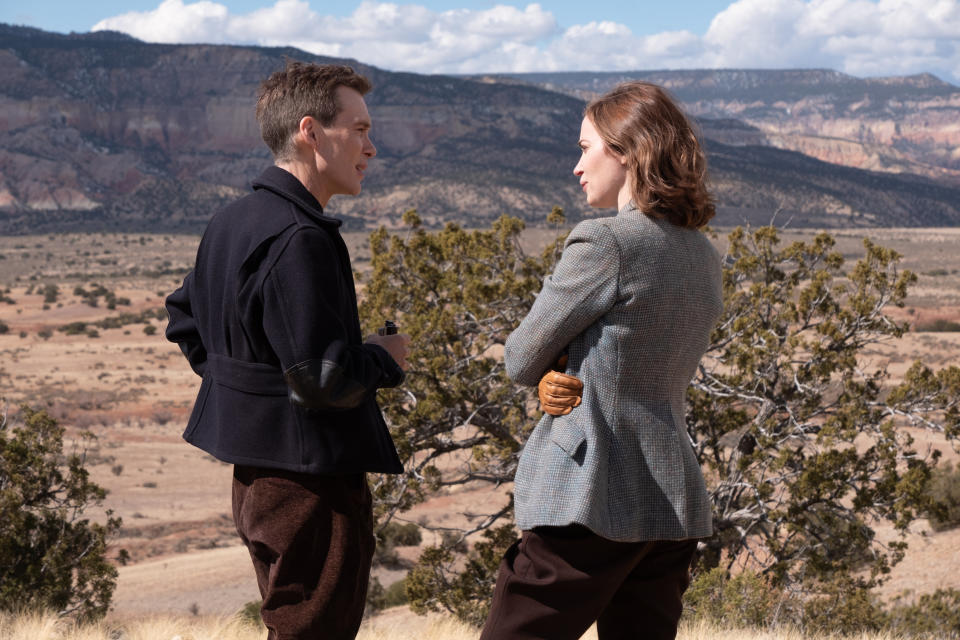Oppenheimer Changed the World, but Never His Style

For costume designer Ellen Mirojnick, “Oppenheimer” isn’t a biopic of theoretical physicist J. Robert Oppenheimer. Nor is it a period piece about the Manhattan Project and the unsteady aftermath of an American political class grappling with who gets to be responsible for the power to destroy the world. The Christopher Nolan film is a portrait — and one she found to be remarkably consistent over the course of the scientist’s life.
The very structure of the film implies that Oppenheimer (Cillian Murphy) was always the man haunted by the building blocks of our universe, always the man who would reach out and try to touch the fire burning at the center of creation. Mirojnick, accordingly, reflected that consistency in how she chose to dress Oppenheimer throughout the film.
More from IndieWire
The Best Modern World War II Movies, from 'Oppenheimer' to 'Inglourious Basterds' to 'Stalingrad'
'Oppenheimer' Isn't the Only Christopher Nolan Film Playing in 70mm This Summer
“Oppenheimer never changed his silhouette from the time he began at Berkeley through the decades. That was a very, very important note to zero in on,” Mirojnick told IndieWire. The costume designer began with a large number of black and white photos of Oppenheimer, but it was actually from later visual examples of Oppenheimer in the ‘50s that Mirojnick realized that his iconic suits and fedora were as much his uniform — and armor — as the gold stars on General Leslie Groves’ (Matt Damon) shoulders.
Oppenheimer’s heavy three-piece suits and tight collars seem to make him larger and lonelier, on an intellectual plane few others can inhabit. But Mirojnick also defines him by the contrast between Oppenheimer and everyone else around him. There’s a subtle language to the suits of the scientists on the Manhattan Project that hints at their seniority, personality, and power — but none of them quite touch Oppenheimer.
This approach too was inspired by research. “There was a photo that we found, and it was all of the scientists gathered at Berkeley,” Mirojnick said. “There were two rows. Then on the third row, there was Oppenheimer up at the top, like, ‘Here are my men.’ And when you look at the photograph, you just see, oh my goodness, [all the scientists] look alike.”
Mirojnick and her team adjusted individual scientists’ suits and accessories to convey their personalities. “[It mattered] whether the character wore a three-piece suit, a two-piece suit, or a sweater vest with a sports jacket and slacks, or a sweater as their piece under the suit, whether they wore a green shirt or they wore a white shirt, a blue shirt,” Mirojnick said. “You really had to look at [the actors]. You had to watch them. You had to listen to them to see how they felt about the character, what they were going to bring, or their interpretation of who that character was.”

Mirojnick and her team characterized the various scientists via everything from cuff links to shoes to the patterns on their ties. But the goal for all the characters was to convey something of their essence, intuitively and silently, through the costumes without getting in the way of the story unfolding on screen.
This was especially true of the main women in Oppenheimer’s life. While there wasn’t much research available on Jean Tatlock (Florence Pugh), Mirojnick felt she could reflect the passion and the drive Tatlock must have brought to her work and beliefs. “We watched [Pugh’s] body movement,” Mirojnick said. “And I found that there was a body consciousness and that it would be really good to put her in passionate colors and things that accentuated her body movement or disappeared. So, if she wore a knit two-piece ensemble, which was appropriate at the time, you really didn’t notice it as much as her silhouette or where the neckline was.”
Soft, movement-accentuating clothing was the rule for Tatlock, but Mirojnick leaned far in the other direction when it came to Oppenheimer’s wife Kitty (Emily Blunt). “Kitty had no soft pieces,” Mirojnick said. “She, I think, transferred her ambition onto Oppenheimer, and during that period of her life, coming from a well-bred, more sophisticated lifestyle and then moving into a rustic lifestyle, it was really important to create an essence of Kitty of that… It was important to have her have a very unself-conscious persona and stand by her man. Which she did.”

The showy and more presentational Kitty gets, the less patience she seems to have with her husband. Similar rules apply for Lewis Strauss (Robert Downey Jr.) who often looks more polished and impressive than Oppenheimer, but Mirojnick helps illustrate a sense of his politicking through his silk scarves and pinstripe affectations. Mirojnick and her team created a pale yellow tie for Strauss based on an image from his Senate confirmation hearing that, even rendered in black and white photography, is an expression of exactly what he thinks of the proceedings.
“We did [the tie in] pale yellow because [the photo] it looked so light, with a navy or a dark widely spaced stripe. And he was wearing a very, very narrow pinstripe suit; very narrow in the spacing of the stripes on that pinstripe suit. And we said, ‘Well, that’s where we have to begin.’ It was automatic,” Mirojnick said.
Mirojnick added that she and her team never really let the shifts from black and white to color and back impact their process, nor was she intimidated by the scope of the IMAX 70mm. “I loved the intimacy of IMAX. It allowed us to really create the essence of these people in a way that was not at a distance,” Mirojnick said. After all, the amount of character work the costumes are doing, like the entirety of Nolan’s film, is tied to Oppenheimer’s specific vision and blind spots. “It’s from [Oppenheimer’s] point of view. So you were right in there with him and what you saw was hopefully what he was seeing and what he was feeling.”
Best of IndieWire
Where to Watch This Week's New Movies, from 'Talk to Me' to 'Haunted Mansion'
Quentin Tarantino's Unmade Movies: 21 Projects the Filmmaker Almost Directed
Sign up for Indiewire's Newsletter. For the latest news, follow us on Facebook, Twitter, and Instagram.

 Yahoo Movies
Yahoo Movies 
